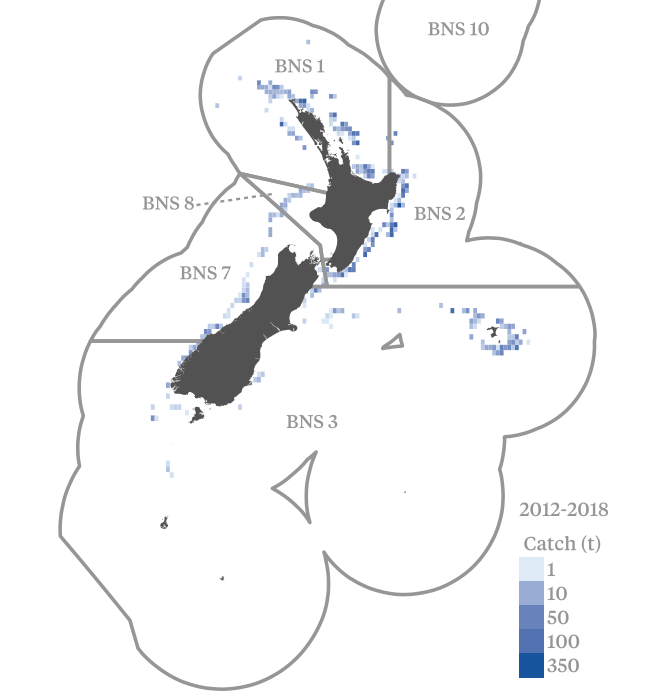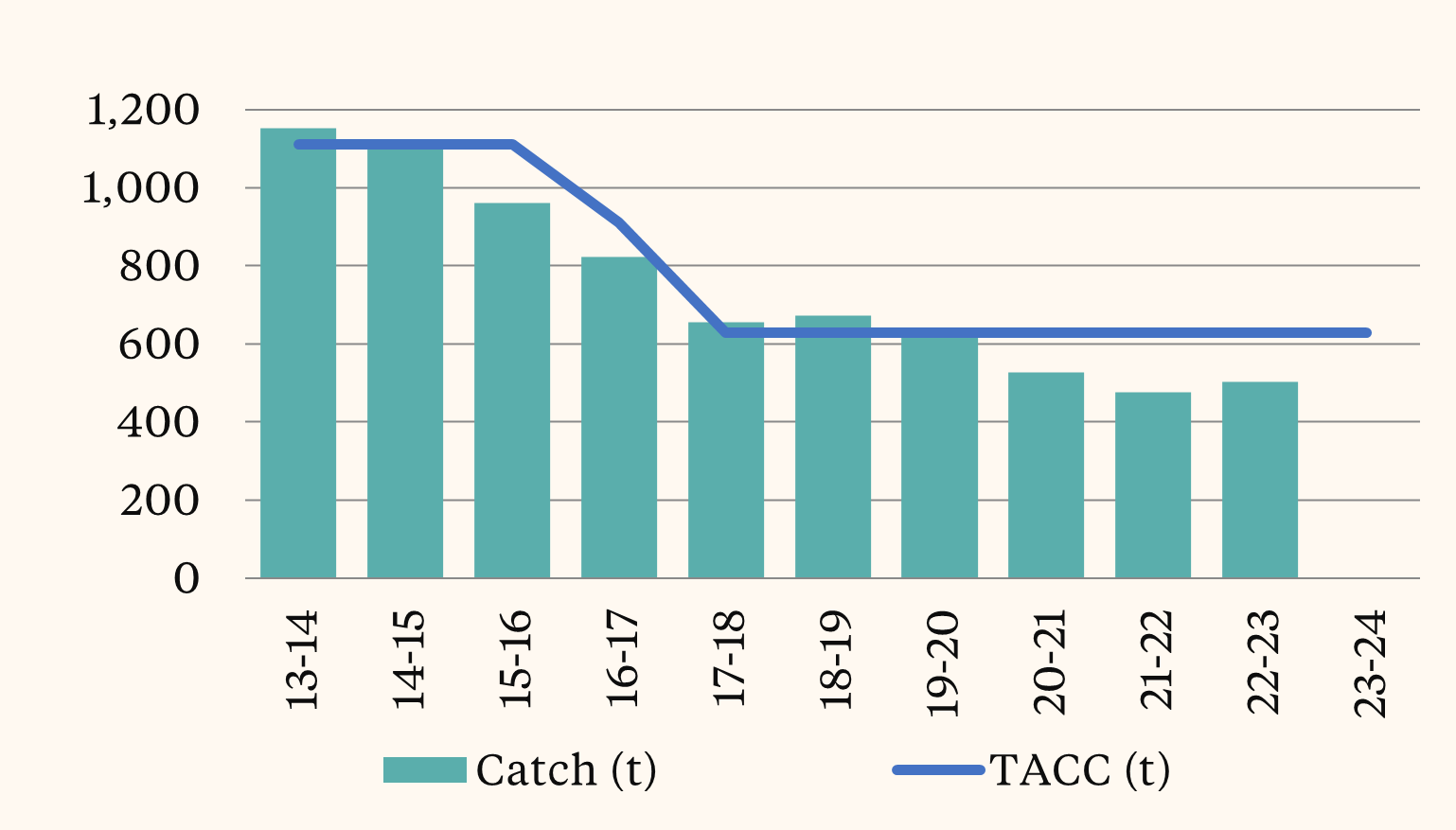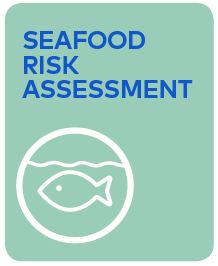Mature, Stone Eye, Bonita, Bream, Griffin's Silver Fish, Blue Eye Trevella
The largest domestic bluenose fisheries occur in BNS 1 and 2. Historically, catches in BNS 2 were predominately taken in the target alfonsino and bluenose trawl fisheries, but have been primarily taken by target bottom longline fishing in recent years. There is a target line fishery for bluenose in the Bay of Plenty and off Northland (BNS 1).
The first fully quantitative stock assessment modelling for bluenose was carried out in 2011. Following the 2011 stock assessment, a rebuild plan was put in place with phased reductions to the TACCs for bluenose stocks. In 2011, TACCs were reduced in BNS 1, BNS 2, and BNS 3. In 2012, TACCs were further reduced for all bluenose stocks. From October 2017, following the assessment being updated to include information up to the end of the 2015–16 year, TACCs have been further reduced to ensure that BNS stocks rebuild towards the target at an appropriate rate consistent with the NZ Harvest Strategy Standard.
TACCs were first established for bluenose upon introduction to the Quota Management System (QMS) in 1986–87. Catch performance against the TACC has varied, with the combined TACC being undercaught by an average of 9% to 20% from 1987 to 2008.
Bluenose is also targeted by recreational fishers around deep offshore reefs using line fishing methods.
The risk assessment for bluenose is currently under review.
The risk assessment framework is used to assess the relative environmental risks of Australian and New Zealand wild-caught fisheries on fish stocks and the aquatic environment.
Assessments are undertaken for each species according to multiple ‘units of assessment’ (UoAs). The UoA is a combination of target species/stock and the gear type used by the fishery. Each UoA is assessed against three components for target species, bycatch and ecosystems, and management systems. Each component has a number of performance indicators, which have associated criteria, scoring issues, and scoring guideposts. For each UoA, each performance indicator is assigned a risk score according to how well the fishery performs against the scoring guideposts.
The risk assessment framework is currently under review and new risk assessments will be available soon.


Risk Assessment Summary

The risk assessment for bluenose is currently under review.
